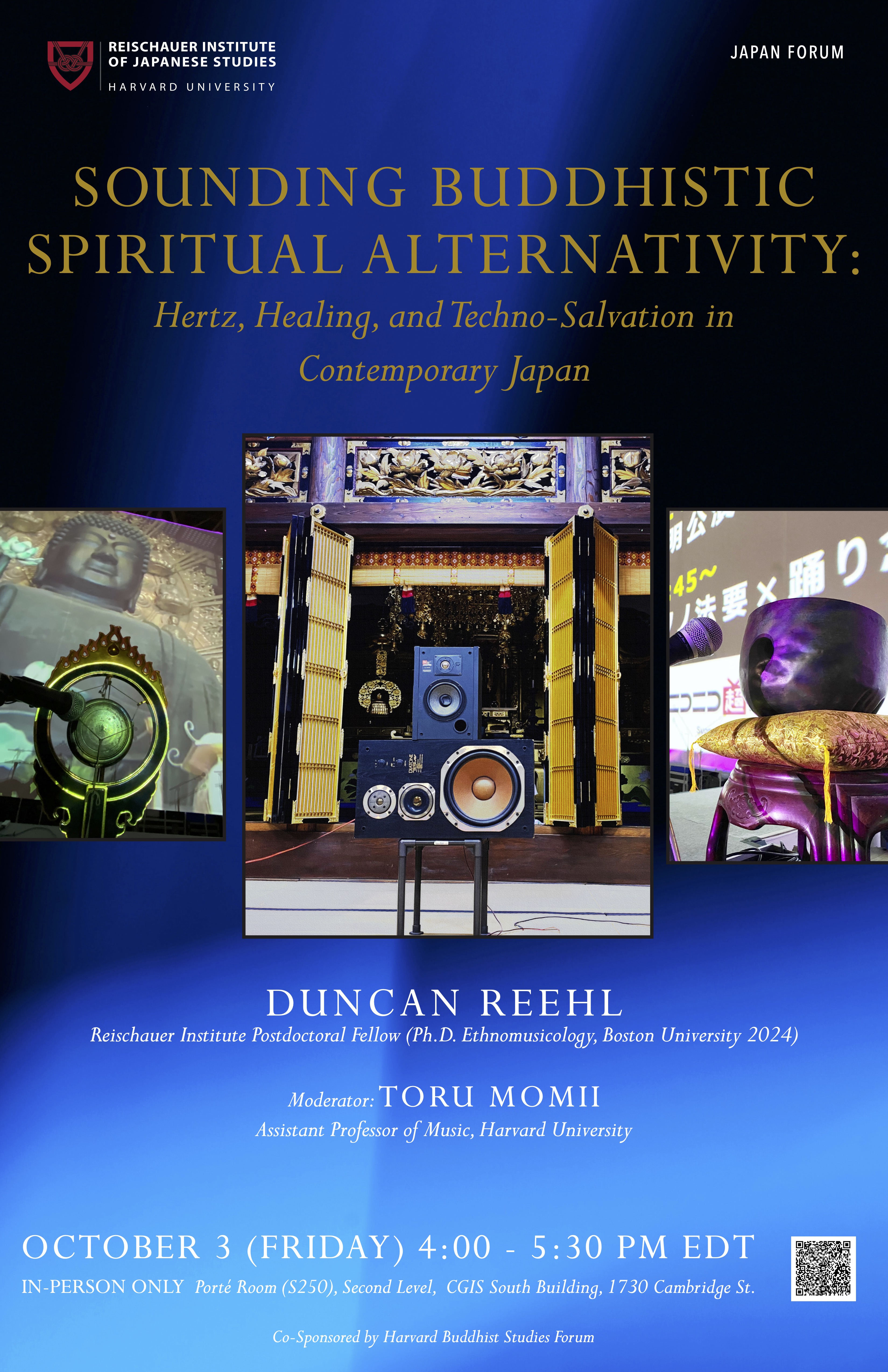Sounding Buddhistic Spiritual Alternativity: Hertz, Healing, and Techno-Salvation in Contemporary Japan
From the syllables of mantras to the songs of preachers, pilgrims, and lute-playing bards, sound and music have long been considered efficacious within Japanese Buddhism. Acts of sounding sacred texts and ritual implements have been central in supramundane efforts such as realizing enlightenment and transferring karmic merit, as well as for mundane purposes such as preventing draught and achieving material benefits. More recently, certain priests are rethinking sonic efficacy using new terms such as “healing” and “comfort” (hīringu, iyashi), articulating Buddhist teachings with discourses such as those of Japan’s “healing boom,” New Age spirituality, scientism, and technological determinism. Grounded in ethnographic fieldwork undertaken between 2019 and 2025, this presentation explores what I call “Buddhistic Spiritual Alternativity,” referring to the entanglement of Japanese Buddhism with various cultural threads including “healing products” (iyashi guzzu), popular music, spiritual therapy, belief in Hertz-based healing, “biohacking,” and more. It presents a series of ethnographic, historical, and media analyses that demonstrate various ways—sometimes complementary, sometimes contradictory—that people conceptualize sonic efficacy in contemporary Japan. Through these analyses, it investigates questions of how technics—ranging from traditional ritual technologies to contemporary digital tools and infrastructure—condition the affects, cultural meanings, and communicability of experiences of healing and salvation mediated by the sense of sound.
Reischauer Institute Japan Forum presentation co-sponsored by the Harvard Buddhist Studies Forum
